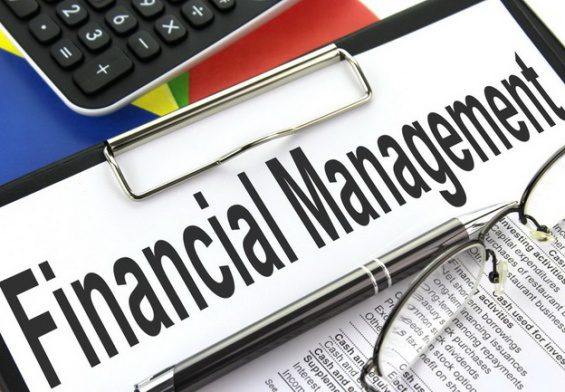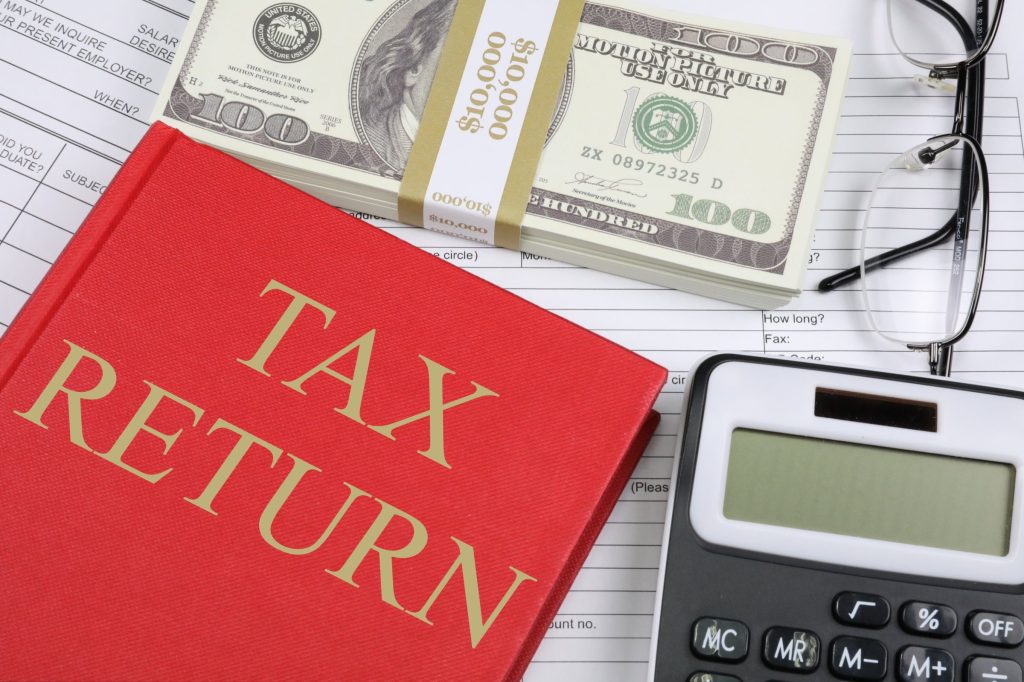
Table of Contents
How to Make the Most of Your Tax Return
How to Make the Most of Your Tax Return: For many people, tax season brings a mix of stress and anticipation. Filing taxes can be a headache, but that feeling of relief when you find out you’re getting a refund? That’s something everyone looks forward to. The question is — what should you do with your tax return once it arrives?
Too often, tax refunds disappear within days. A new phone, a shopping spree, or a few impulsive online orders — and suddenly, that extra money is gone. But what if you could use your tax refund to create lasting benefits for your financial future?
In this article, we’ll explore smart, effective, and practical ways to make the most of your tax return — so that extra money works for you long after tax season ends.
Understanding Your Tax Return
Before deciding how to spend or invest your refund, it helps to understand where it comes from. A tax return isn’t “free money” — it’s essentially your money being returned to you because you overpaid taxes throughout the year.
When your employer withholds more taxes than you actually owe, the IRS refunds the difference. While that might sound like a bonus, it also means you’ve been giving the government an interest-free loan for months.
That said, getting a refund isn’t a bad thing — as long as you use it wisely. Think of it as an opportunity to take control of your financial goals.
Step One: Evaluate Your Financial Situation
Before you spend a single dollar of your tax return, pause and take a good look at your financial picture.
Ask yourself:
- Do you have an emergency fund?
- Are you carrying high-interest debt?
- Are you saving enough for retirement?
- Do you have upcoming expenses or goals that require funding?
The answers to these questions can help you prioritize how to use your refund strategically. Your tax return can be a chance to reduce financial pressure or build a more secure future.
1. Build or Strengthen Your Emergency Fund
If there’s one thing the past few years have taught us, it’s the importance of being prepared for the unexpected. A solid emergency fund can protect you from financial stress when life throws a curveball — like a job loss, medical emergency, or car repair.
Financial experts generally recommend having three to six months’ worth of expenses saved in an easily accessible account.
If your emergency fund is small or nonexistent, your tax refund is the perfect opportunity to give it a boost. Even a few hundred dollars can make a big difference when you need it most.
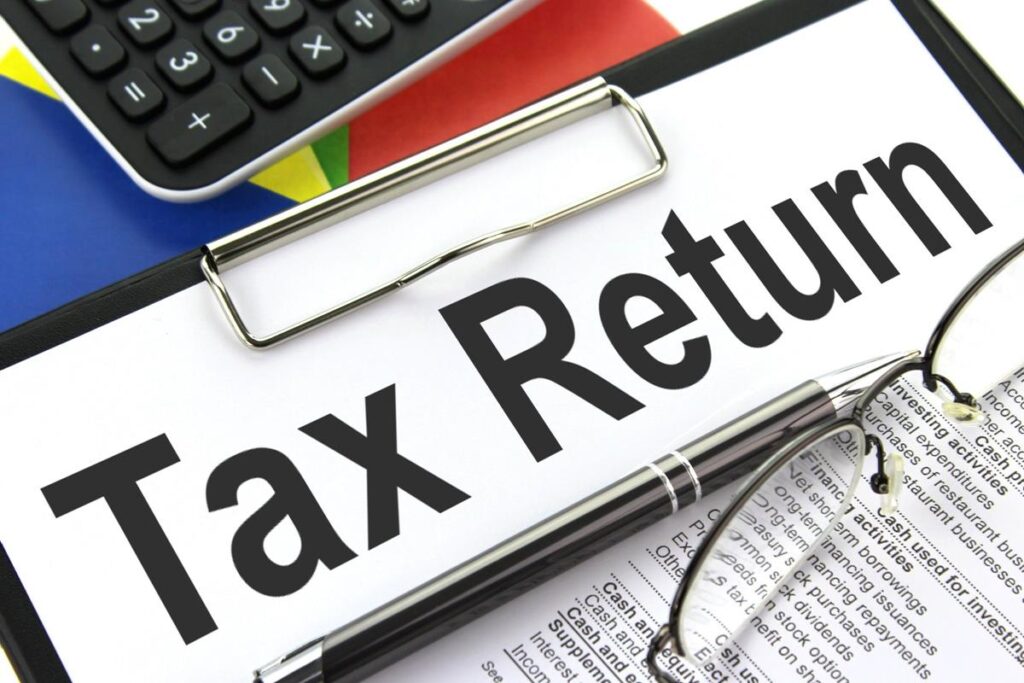
2. Pay Down High-Interest Debt
If you have credit card balances, personal loans, or other debts with high interest rates, using your refund to pay them off is one of the smartest financial moves you can make.
Why? Because high-interest debt eats away at your income and limits your ability to save or invest.
For example, if your credit card charges 20% interest, paying down that balance gives you a guaranteed 20% return — something few investments can match.
Start with your highest-interest debt first. You’ll free up more money in your monthly budget, reduce financial stress, and improve your credit score over time.
3. Invest in Your Future
Your tax refund can be a powerful tool for building long-term wealth if you choose to invest it wisely. You could:
- Add it to your retirement account, like an IRA or 401(k).
- Start an investment account to buy stocks, ETFs, or mutual funds.
- Use it to open a Health Savings Account (HSA) if you qualify.
Even small amounts can grow significantly over time thanks to compounding returns. Investing your refund instead of spending it can set you on a path toward financial independence.
4. Upgrade Your Skills or Education
Investing in yourself is one of the best long-term uses of your tax return. Whether you’re looking to advance your career, switch industries, or start a side business, using your refund to enhance your skills can lead to higher income and better opportunities.
You could:
- Take an online certification course
- Enroll in a workshop related to your profession
- Buy educational materials or tools for a skill you want to master
This kind of investment can pay off far more than short-term luxuries ever could.
5. Start or Grow a Side Business
If you’ve been dreaming about starting a small business or side hustle, your tax refund can provide the seed money to get started.
You can use it to:
- Purchase equipment or software
- Build a website
- Market your services
- Buy initial inventory
Even a modest refund can help you establish an additional income stream. Over time, that side income could become a major financial boost or even replace your full-time job.
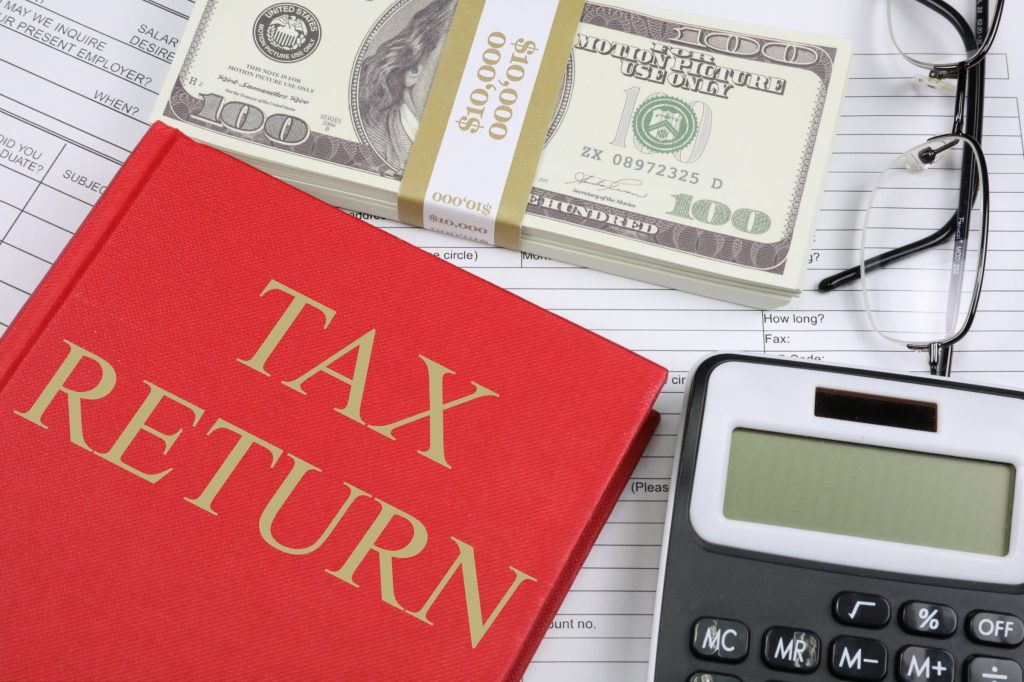
6. Make Home Improvements That Add Value
If you own a home, using your tax return for upgrades that increase property value can be a smart move. Focus on improvements that either save money or raise your home’s worth, such as:
- Energy-efficient appliances
- Roof or window repairs
- Insulation upgrades
- Small kitchen or bathroom remodels
These improvements not only make your home more comfortable but also enhance its resale value.
7. Contribute to a Child’s Education Fund
Parents can use their tax refund to invest in their children’s future. Contributing to an education savings account like a 529 plan (or similar regional alternative) helps prepare for college costs while offering tax benefits.
Starting early means your investment has more time to grow, reducing the burden of student loans later.
8. Boost Your Retirement Savings
If you’re already contributing to retirement accounts, great! But if you’re behind, your tax refund can help you catch up.
You can:
- Contribute to your IRA or Roth IRA.
- Add extra funds to your employer-sponsored plan.
- Open a self-employed retirement account if you freelance.
The more you contribute now, the better your financial comfort will be later in life.
9. Treat Yourself — But Set Limits
It’s important to be financially responsible, but it’s also okay to enjoy your hard work. You don’t have to put every dollar of your tax return toward savings or bills.
Consider allocating a small portion — maybe 10% or 15% — for something that brings you joy. A dinner out, a weekend getaway, or a small upgrade for your home can be satisfying rewards without derailing your goals.
The key is balance — reward yourself without sabotaging your financial progress.
10. Save for Upcoming Expenses
If you know you have upcoming costs — like a wedding, vacation, or car repair — using your refund to prepare in advance can prevent you from going into debt later.
Setting aside part of your refund in a dedicated sinking fund helps you cover these future expenses without using credit cards or loans.
11. Fund Your Health and Wellness
Your health is an investment, not an expense. Consider using your tax refund to improve your physical or mental well-being. You could:
- Pay for a gym membership or personal training
- Get a medical check-up
- Invest in therapy or wellness programs
These choices can lead to better energy, productivity, and overall quality of life — all of which can positively impact your finances in the long run.
12. Support a Cause You Believe In
If you’re in a comfortable financial position, donating part of your refund to charity can make a meaningful impact. Giving back supports your community and can also provide potential tax deductions next year.
Choose organizations that align with your values — whether it’s education, the environment, or social welfare — and make a difference with your dollars.
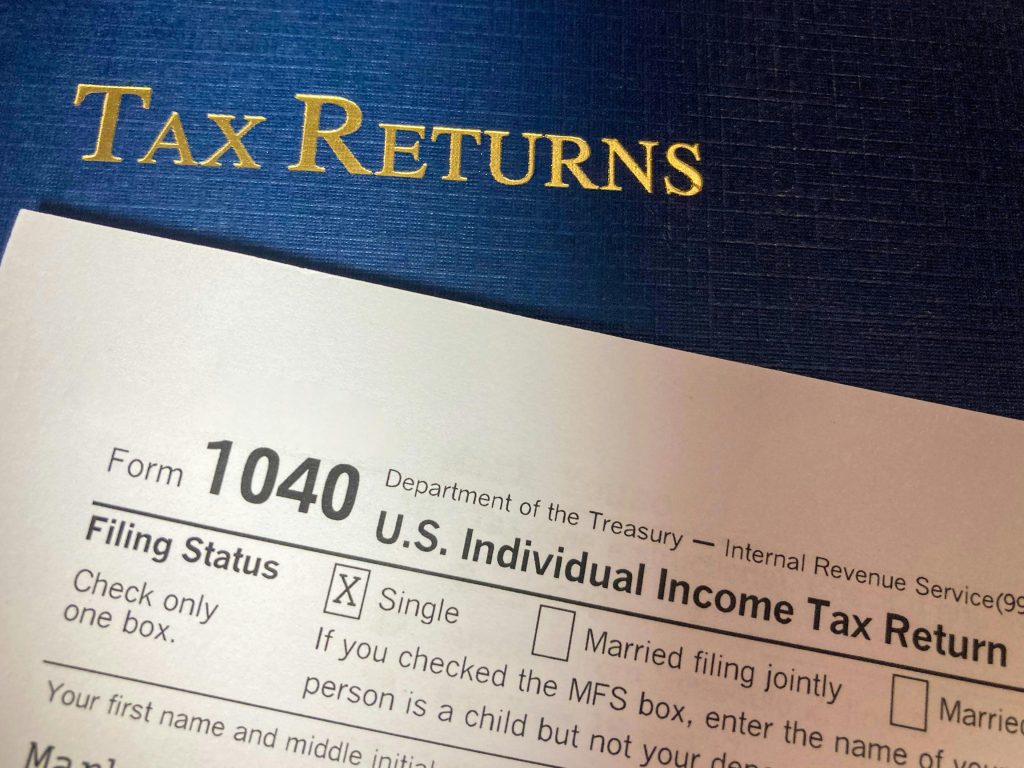
13. Review and Adjust Your Tax Withholding
While getting a tax refund feels great, it often means you’ve been overpaying taxes throughout the year. Consider adjusting your W-4 form or your tax withholding with your employer to better match your actual tax liability.
That way, you’ll keep more of your income each paycheck instead of waiting for a lump sum refund next year. This allows you to save or invest more regularly throughout the year.
14. Automate Your Savings for Next Year
Use this refund as an opportunity to build better habits. Set up an automatic transfer from your checking account to your savings or investment account every month.
This “set it and forget it” approach ensures you keep making progress toward your goals even without constant effort. Over time, small automated savings can add up significantly.
15. Use Your Refund to Plan Ahead
Instead of viewing your tax return as a one-time bonus, treat it as a foundation for next year’s goals. Ask yourself:
- What do I want my finances to look like next year?
- How can this refund move me closer to that vision?
Whether that means becoming debt-free, boosting investments, or saving for a big purchase, your refund can be the spark that starts real progress.
16. Seek Professional Advice if Needed
If you’re unsure how to use your refund most effectively, consider consulting a financial advisor or tax professional. A small investment in expert guidance can lead to smarter decisions and better long-term results.
Professionals can help you allocate your refund in ways that align with your goals, tax situation, and risk tolerance.
Final Thoughts: Turning a Refund into a Financial Win
Your tax return is more than just a check from the government — it’s a chance to improve your financial life. Whether you use it to pay down debt, build savings, invest in your future, or pursue new opportunities, the key is intentionality.
When you plan ahead and use your refund strategically, you’re not just getting temporary satisfaction — you’re building lasting financial security.
So this tax season, before you click “add to cart” or book that impulsive trip, take a moment to consider how your refund can work harder for you.
A little smart planning today can lead to big financial rewards tomorrow.
Also visit:-
10 Simple Ways to Bring Romance Back into Your Marriage
FAQs on How to Make the Most of Your Tax Return
1. What is a tax return?
A tax return is a document you file with the tax authority detailing your income, expenses, and other financial information to calculate how much tax you owe or how much refund you’re eligible for.
2. Why do people get a tax refund?
People receive tax refunds when they’ve paid more in taxes throughout the year than they actually owe. The government returns this overpaid amount as a refund.
3. Is a tax refund free money?
No, it’s not free money. A tax refund simply means you overpaid your taxes during the year, and the government is giving back the excess.
4. What should I do first with my tax refund?
Before spending, evaluate your financial situation. Check if you have debts, an emergency fund, or upcoming expenses to prioritize where your refund will make the biggest impact.
5. How can I use my tax return to improve my finances?
Use it to build an emergency fund, pay off debt, invest, or save for retirement. Each of these choices strengthens your financial foundation.
6. Should I pay off debt with my tax refund?
Yes, especially high-interest debt like credit cards. Paying it off reduces financial stress and improves your credit score.
7. How much of my tax refund should I save?
Aim to save at least 50% if possible — divide it between emergency savings, retirement contributions, and other long-term goals.
8. Can I invest my tax refund?
Absolutely. You can invest in stocks, mutual funds, ETFs, or retirement accounts like an IRA to build wealth over time.
9. What are the best short-term uses for a tax refund?
Short-term options include building a safety net, paying bills in advance, or saving for upcoming expenses like vacations or car maintenance.
10. How can I use my tax refund to build an emergency fund?
Deposit your refund in a high-yield savings account or a dedicated emergency account that’s easy to access during unexpected situations.
11. Is it smart to use my tax refund for home improvements?
Yes, if the improvements add value or reduce long-term costs — like energy-efficient upgrades, insulation, or small renovations.
12. Can I use my tax refund to start a business?
Yes. Your refund can fund your startup costs, website, marketing, or equipment for a side hustle or small business.
13. Should I spend any part of my tax refund on myself?
It’s okay to enjoy part of your refund, but set limits. Spending 10–15% on something fun helps you stay motivated while keeping finances balanced.
14. What are some smart long-term uses for a tax refund?
Investing, boosting retirement savings, paying off student loans, or funding education are all excellent long-term options.
15. Can I use my tax refund for education or skill-building?
Yes. Investing in education or certifications can increase your earning potential and future career opportunities.
16. How can I make my tax refund last longer?
Use it intentionally. Split it into savings, investments, and debt payments so it benefits your finances all year round.
17. Is it better to save or invest my tax refund?
It depends on your goals. If you don’t have an emergency fund, save it. If you already have savings, consider investing for higher returns.
18. Can I use my tax refund to pay off student loans?
Yes, paying down student loans early reduces interest costs and helps you become debt-free sooner.
19. How can I use my tax refund to plan for retirement?
Add it to a retirement account like a 401(k) or IRA. This not only grows your future savings but may offer tax advantages.
20. What are creative ways to use a tax refund?
Some creative uses include investing in self-development, creating an online business, or using it as a down payment for an asset.
21. How can I avoid wasting my tax refund?
Avoid impulse spending. Have a plan for how you’ll use your refund before it arrives so you can stay on track financially.
22. Should I adjust my tax withholding for next year?
Yes. Adjusting your withholding helps you take home more money each month instead of waiting for a big refund.
23. Can I use my tax refund for charitable donations?
Definitely. Donating to charities supports causes you care about and may also qualify for tax deductions next year.
24. How can I use my tax refund to improve my credit score?
Use your refund to pay off credit card balances or make consistent on-time payments to reduce your credit utilization ratio.
25. Should I keep my tax refund in a separate account?
Yes, keeping it in a separate savings or investment account prevents accidental spending and helps you track progress.
26. How can couples use their tax refund wisely?
Couples can use it for joint goals like paying off shared debt, saving for a home, or funding a family emergency account.
27. Is using my refund for travel a bad idea?
Not necessarily. If you’ve already met financial priorities like savings and debt repayment, using a portion for travel can be rewarding.
28. How can parents use their tax refund effectively?
Parents can use refunds to start or add to a child’s education fund, pay down family debt, or cover future school costs.
29. Should I invest my tax refund in real estate?
If you have enough to start, yes. You could use your refund toward a down payment or improvements on a rental property.
30. How can I use my refund to protect my finances?
Build or increase insurance coverage, start an emergency fund, or set up a savings cushion for unpredictable expenses.
31. What’s the best way to divide a tax refund?
A good rule of thumb: 50% for savings or investments, 30% for debt repayment, and 20% for personal enjoyment.
32. Can I use my refund to create passive income?
Yes. You could invest in dividend stocks, real estate funds, or digital products that generate recurring earnings.
33. Is it smart to use my refund to buy luxury items?
Only if your financial essentials are covered. Luxury purchases should come after you’ve saved, invested, or paid off debt.
34. How can I use my refund to reduce financial stress?
Pay down debt, build a cash cushion, and automate savings to create a sense of control and peace of mind.
35. What’s the worst thing to do with a tax refund?
Spending it impulsively without a plan or using it to buy depreciating items that don’t add long-term value is a common mistake.
36. How can I make my tax refund help me next year?
Invest it in income-generating assets or savings that will reduce your financial pressure or boost earnings in the coming year.
37. Should I talk to a financial advisor about my refund?
Yes, a financial advisor can help you allocate your refund strategically based on your goals and current situation.
38. Can I use my tax refund for health expenses?
Yes. Paying for insurance premiums, checkups, or starting a health savings account (HSA) are excellent uses of your refund.
39. Is it smart to invest my refund in the stock market?
If you have a stable emergency fund and no high-interest debt, investing in diversified stocks or ETFs can be a smart long-term move.
40. How can I make my tax refund part of my financial goals?
Include it in your yearly budget plan. Treat your refund as a bonus contribution to your savings, debt repayment, or investment portfolio.
Also visit:-


